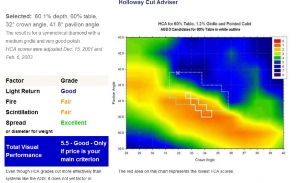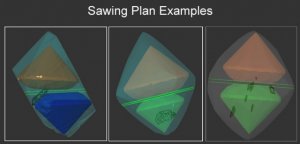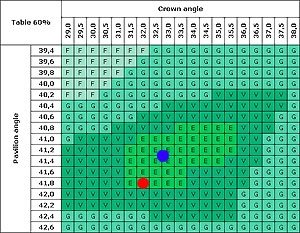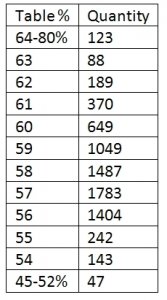blueiris
Brilliant_Rock
- Joined
- Jun 7, 2010
- Messages
- 568
I'm sure this has been asked before and I tried to search but didn't have any luck. Sorry if it's redundant.
I've often read here that the HCA is a rejection tool, not a selection tool. I've also read that a diamond scoring below a 2 on the HCA is worthy of further consideration. I've also read that a higher/lower HCA score is not an indication of a diamond's performance, and that some people may prefer the appearance of a diamond with a higher (or lower) HCA score. And I've often read that imaging like ASET and Idealscope "trumps" the HCA, which leads to my question.
I often check diamonds with the HCA just for fun, to sort of test my ability to guess a diamond's HCA score just from its numbers. I have seen many diamonds score Excellent in Light Return, Excellent in Fire, Excellent in Scintillation, and Very Good in Spread. But I've also noticed that sometimes diamonds with excellent-looking ASET and Idealscope (and H & A images, if applicable), some of them in what is called the "super ideal" category, score lower in the HCA factor grades of Light Return, Fire, Scintillation, and Spread. For instance, one stone I was looking at today scored Very Good in all four categories, yet is a branded, super ideal, hearts and arrows stone. The HCA score is below 2 (1.8, IIRC), so it would be deemed worthy of further consideration - but wouldn't that further consideration be the ASET and Idealscope imaging, which looked good? And if that's case, is that stone not going to be as fiery, scintillating and good in light return as another branded super ideal stone that does score EX, EX, EX in the first three HCA factors?
I've often read here that the HCA is a rejection tool, not a selection tool. I've also read that a diamond scoring below a 2 on the HCA is worthy of further consideration. I've also read that a higher/lower HCA score is not an indication of a diamond's performance, and that some people may prefer the appearance of a diamond with a higher (or lower) HCA score. And I've often read that imaging like ASET and Idealscope "trumps" the HCA, which leads to my question.
I often check diamonds with the HCA just for fun, to sort of test my ability to guess a diamond's HCA score just from its numbers. I have seen many diamonds score Excellent in Light Return, Excellent in Fire, Excellent in Scintillation, and Very Good in Spread. But I've also noticed that sometimes diamonds with excellent-looking ASET and Idealscope (and H & A images, if applicable), some of them in what is called the "super ideal" category, score lower in the HCA factor grades of Light Return, Fire, Scintillation, and Spread. For instance, one stone I was looking at today scored Very Good in all four categories, yet is a branded, super ideal, hearts and arrows stone. The HCA score is below 2 (1.8, IIRC), so it would be deemed worthy of further consideration - but wouldn't that further consideration be the ASET and Idealscope imaging, which looked good? And if that's case, is that stone not going to be as fiery, scintillating and good in light return as another branded super ideal stone that does score EX, EX, EX in the first three HCA factors?












300x240.png)